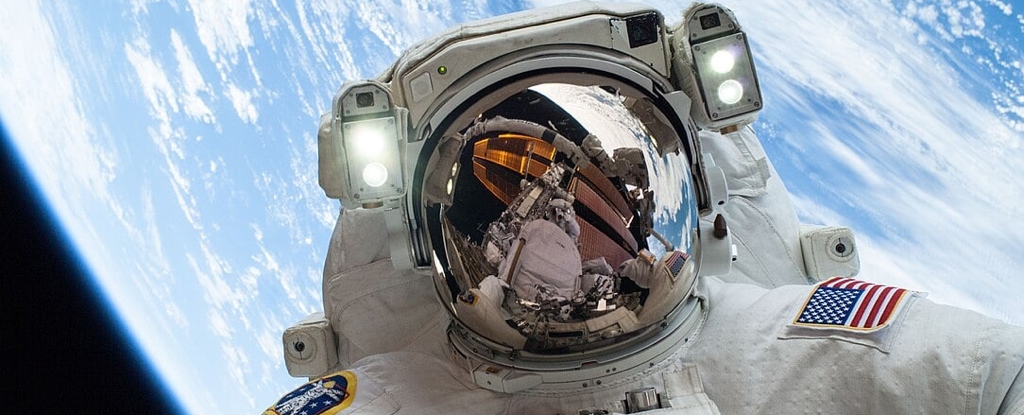When astronauts return from the International Space Station, many have noticed an unexpected side effect of their mission, their eyesight has changed.
This phenomenon, affecting about 70% of astronauts on long duration missions, has NASA scientists working to understand why weightlessness affects how we see.
Dr. Sarah Johnson noticed it first during her six month stay aboard the ISS. She reported that text that was crystal clear before launch became blurry.
Johnson isn’t alone though, astronauts frequently report difficulty reading, blurred distance vision, and other visual changes that can persist for years after returning to Earth.
Related: Astronauts Reveal The Shocking Beauty of Lightning From Space
The condition is now known as Spaceflight Associated Neuro-ocular Syndrome or SANS for short, and it’s become one of the most pressing health concerns for long-duration space missions. Unlike motion sickness or muscle weakness which resolve quickly back on Earth, the vision changes can be permanent.
The culprit appears to be microgravity itself. On Earth, gravity constantly pulls fluids downward through our bodies. In space, these fluids redistribute, causing facial puffiness and increased pressure inside the skull.
This elevated pressure can flatten the back of the eyeball and cause swelling of the optic nerve. These findings have major implications for Mars missions, which could last 2-3 years.
“We need to understand whether these changes stabilise or continue worsening over time. An astronaut with severely compromised vision could jeopardise an entire Mars mission.” – Dr. Michael Roberts, NASA’s vision research lead.
Roberts and his team at NASA are developing several countermeasures, including special contact lenses, medications to reduce fluid pressure, and exercise protocols that might help maintain normal circulation.
They’re also testing a device called the Visual Impairment Intracranial Pressure (VIIP) chamber that could simulate Earth-like pressure conditions for the eyes.
While concerning, this research benefits everyone on Earth too. Scientists are gaining new insights into how pressure affects vision, potentially helping treat conditions like glaucoma and intracranial hypertension.
Understanding how our bodies adapt to space remains crucial. As we test the limits of our bodies more and more through longer duration space flight, alas we uncover more and more challenges.
The research into solutions will continue at NASA and on board the ISS so that hopefully, when we finally do reach out on a human trip to Mars, we can at least see clearly what we have accomplished!
This article was originally published by Universe Today. Read the original article.
